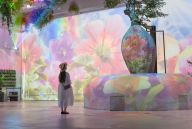One Pass, Three Seasons: How to Use the JR Tohoku-South Hokkaido Rail Pass in Winter, Spring, and Fall
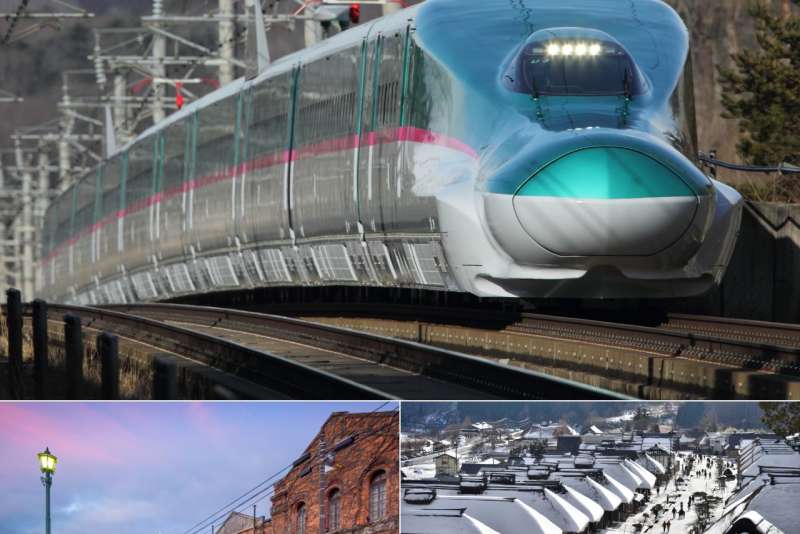
When traveling to Japan in winter, make sure you visit the Hokkaido and Tohoku areas at least once in your lifetime. The sceneries are unique, the snow activities are plentiful, and the events held at this time of year are not to be missed.
Tour around the northern part using the JR Tohoku-South Hokkaido Rail Pass. It’s particularly helpful if you’re visiting the central Tohoku area as well as the southern area of Hokkaido. Here’s what you need to know about the train pass and the recommended routes when using it.
What is the JR Tohoku-South Hokkaido Rail Pass?

The JR Tohoku-South Hokkaido Rail Pass is a pass that can be used for Shinkansen (bullet train) and limited express trains in the Southern Hokkaido area, including Sapporo, Hakodate, New Chitose Airport, and the Tohoku area. It is exclusive to short-term visitors who have a non-Japanese passport and are staying in Japan for 90 days or less.
Here’s information about the pass and how to purchase it. In this case, we purchased a pass before the trip in order to travel efficiently, and then exchanged it for a ticket after we arrived in Japan.
Validity period:
6 days of unlimited travel on trains and Shinkansen in the areas covered
Fare:
Adults (aged 12 years and older) ¥24,000; children (6 - 11 years old) ¥12,000
※Prices are subject to change.
Main Coverage:
JR East (including BRT or Bus Rapid Transit), JR Hokkaido Lines, Aomori Railway Line, Iwate Galaxy Railway (IGR) Line, Sendai Airport Access Line
How to purchase:
[From overseas]
After purchasing online or from representative travel agencies, pick up the passes at sales locations selling products for foreign tourists visiting Japan (such as the Japan Rail Pass). Present your passport to redeem.
[Within Japan]
Present your passport at the JR EAST Travel Service Center at Tokyo Station or Shinjuku Station to purchase. It is also available at main stations in the Hokkaido and Tohoku areas.
Recommended winter trips and places to visit during spring and autumn using the JR Tohoku-South Hokkaido Rail Pass
We used the JR Tohoku-South Hokkaido Rail Pass to go around a tour course where Hokkaido and Tohoku in winter can be enjoyed to the fullest. In order to save time and travel around as many prefectures as possible, we flew to Sapporo in Hokkaido, then headed south to Hakodate and the Tohoku area. From Tohoku we used the pass to travel to Tokyo Station. This time, we did winter sightseeing, but there are lots of famous spots for viewing cherry blossoms in spring and autumn leaves in autumn too, so we promised to go around Hokkaido and Tohoku again in different seasons. If you are planning to go in the spring or autumn, we included a list of the best places to view cherry blossoms and autumn leaves in each prefecture.
Lots of local food and snowy scenery in Tohoku
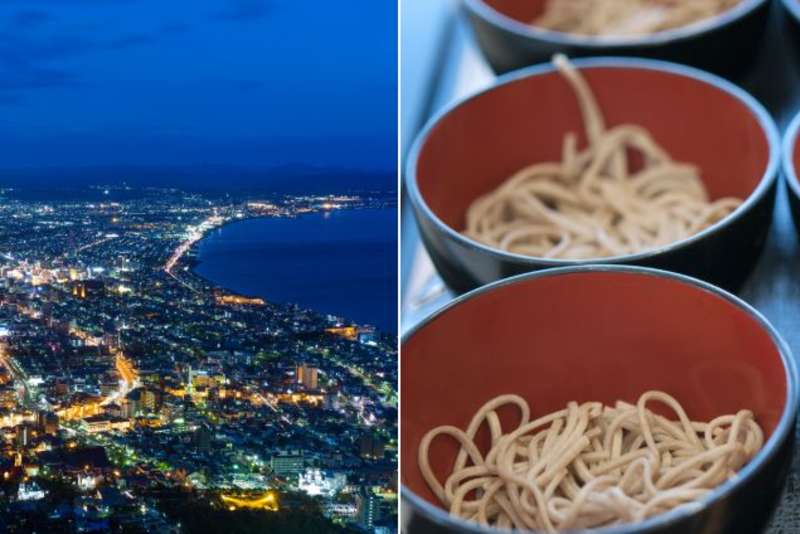
Day 1: Enjoy delicious seafood and Hakodate ramen at the morning market in Hakodate (Hokkaido). Enjoy the night view from Mt. Hakodate.
Day 2: Catch the snowy scenery at Hirosaki Castle Snow Lantern Festival, Apple confectionery, Resort Shirakami in Hirosaki (Aomori)
Day 3: Sightsee around Akita Station in the morning, eat delicious local cuisine in Morioka (Iwate) in the afternoon, and look for Nanbu ironware
Day 4: Have a snowy scenery bath experience at Hanamaki Hot Spring (Iwate)
Day 5: Enjoy the ruins of Sendai Castle in Geibikei (Iwate) and Sendai (Miyagi), and relish beef tongue before heading to Tokyo
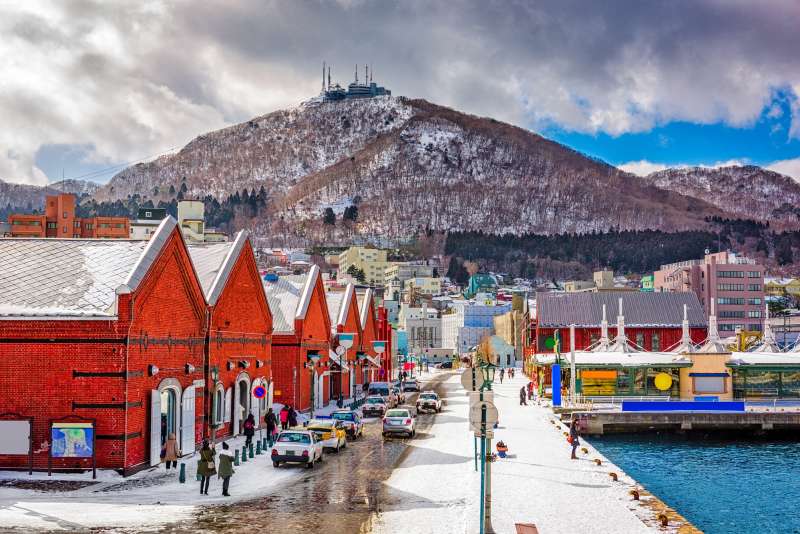
On the first day, sightseeing starts in Hakodate. We got to enjoy the famous fresh squid sashimi (transparent yet crunchy!) and Hakodate ramen at the morning market, and basked in the night scenery at Mt. Hakodate. The night view we were looking forward to was even more beautiful as the air is clean in winter, so we were very impressed!

On the second day, we took the Shinkansen from Shin-Hakodate Hokuto Station to Shin-Aomori Station in the Aomori Prefecture in the Tohoku region. When we arrived, we learned that the Hirosaki Castle Snow Lantern Festival was being held in Hirosaki, which is about 45 minutes by train from Aomori Station, so we headed there. We were super happy to see, touch, and enjoy the snow!
Following that, from Hirosaki Station, we boarded the Gono Line Resort Shirakami that we wanted to try riding at least once. From the train window, the winter view of the Sea of Japan, the snow-covered countryside, and the Shirakami Mountains could be spotted in the distance! We were elated by the amazing view of the snow.
On the third day, after strolling around the parks and looking around in prefectural museums near Akita Station, we headed to Morioka in the Iwate Prefecture. We ate the famous Wanko soba and bought Nambu ironware, which we’ve always been meaning to buy. It was a good remembrance of our trip.
On the fourth day, we went to Hanamaki Hot Spring, one of the best hot spring areas in the Tohoku region. We soaked in the warm water and enjoyed the snow scenery before us. At the famous rose garden, Christmas roses were in bloom in the greenhouse even in winter!
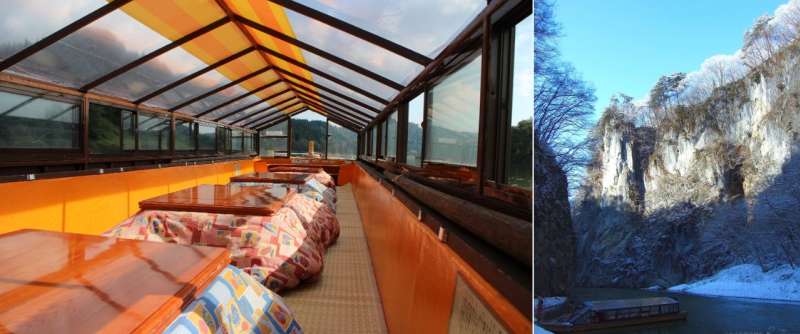
On the fifth and final day in the Tohoku region, we went to Geibikei in Ichinoseki. Along the Satetsu River, there’s a limestone cliff that stands at a height of more than 50 meters and stretches for about 2 kilometers. Since it was winter, we took a kotatsu boat to catch the view. A kotatsu is a heating apparatus in which the upper part of the heat source is covered by a parapet (protective wall) and a futon is draped over it. It was my first experience with Japanese kotatsu, and it was warm and cozy.
After that, we visited famous places such as Sendai Castle Ruins and tried Sendai's famous beef tongue before heading to Tokyo. If you have time on the way back to Tokyo, do consider stopping by at Aizu-Wakamatsu and Ouchi-juku, both in the Fukushima Prefecture. For skiing and snowboarding, we recommend making a dash from Sendai to Zao (Yamagata).
Scenic spots in Hokkaido & Tohoku throughout various seasons and sample itineraries for each season

1)Enjoy the cherry blossoms, castles, and hot springs in springtime!
Day 1 Hakodate (Hokkaido):
See the pink carpet while overlooking the city of Hakodate from Goryokaku Tower
Day 2 Hiromae (Aomori):
Enjoy the castle and cherry blossoms at Hiromae Park!
Day 3 Kakunodate (Akita):
Make the best memories of your trip at the Samurai residences and Hinokinai Riverbank
Day 4 Nyuto Onsen (Akita):
Enjoy the superb view of Yamazato and seven unique hot springs
Day 5 Aizu-Wakamatsu (Fukushima):
See the illuminations at the Sakura Festival at Tsuruga Castle Park
If you visit Japan in the spring, why not make sakura (cherry blossom) the theme of your trip? In Hokkaido and Tohoku, cherry blossoms are in full bloom from mid-April to early May.
Goryokaku Tower in Hakodate and Hirosaki Park in Hirosaki are two spots famous for sakura viewing, attracting about two million people to their respective sakura festivals each year. Kakunodate in the Akita Prefecture is also one of the best cherry blossom viewing spots in Tohoku. The samurai residence and Hinokinaigawa Tsutsumi Park have also been included in the 100 Best Cherry Blossom Spots in Japan.
After enjoying Kakunodate, get on JR Tazawako Line to see Lake Tazawa and head to Nyuto Hot Spring Village, seven hot spring inns located around the foot of Mt. Nyuto in Towada-Hachimantai National Park. The secluded hot spring is favored by the hot-spring-loving Japanese. On the final day, visit the sakura festival in Tsuruga Castle Park in Aizu-Wakamatsu. The illuminations at the castle park are also reason enough to drop by.
If you want to spend a little more time sightseeing in Hokkaido, check out Hokkaido Shrine and Maruyama Park in Sapporo, which are also famous cherry blossom spots too.

(2) Enjoy the autumn leaves in Hokkaido and Tohoku
Day 1 Hakodate (Hokkaido):
Visit the scenic former Iwafune Garden (Kosetsuen)
Day 2 Hirosaki (Aomori):
Hike up Mt. Iwaki
Day 3 Morioka (Iwate):
See Morioka Castle Ruins Park, conquer Three Great Noodles of Morioka
Day 4 Zao Onsen (Yamagata):
Take in the spectacular view of Zao Ropeway
Day 5 Urabandai (Fukushima):
Go to Goshikinuma and then to Lake Hibara
There are lots of spots for viewing autumn leaves in the Hokkaido and Tohoku areas. First, head to the scenic spot in Hakodate, the former Iwafune Garden (Kosetsuen). The autumn colors of the maple leaves are so beautiful that you will surely forget the passing of time.
The next day, move to Hirosaki in Aomori Prefecture and head to Mt. Iwaki. In Mt. Iwaki, also known as Tsugaru Fuji, the contrast between red and green autumn leaves takes your breath away.
On the third day, head to Morioka Castle Ruins Park. Morioka is also known for its Three Great Noodles (Morioka Reimen, Morioka Jajamen, and Wanko soba). Don’t leave the city without giving them a try!
On the fourth day, head to Zao Onsen in the Yamagata Prefecture. If you ride the ropeway, you can see the autumn leaves forming a red carpet underneath you.
On the final day, head to Urabandai to see the autumn colors at Goshikinuma (the Five Colored Lakes) and Lake Hibara. Trekking is also highly recommended!
How is the JR Tohoku-South Hokkaido Rail Pass different from the JR East Pass?
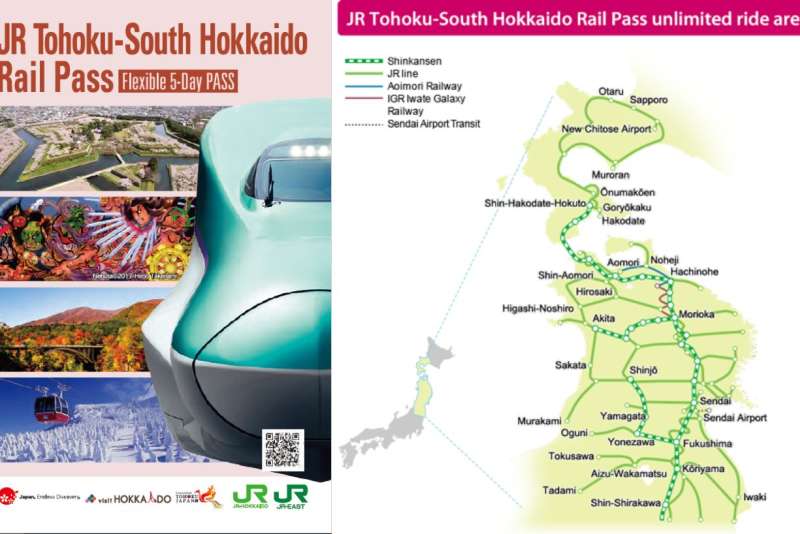
The difference between the JR Tohoku-South Hokkaido Rail Pass and the JR East Pass is the areas where they can be used. Besides the areas mentioned in the beginning of this story, the JR Tohoku-South Hokkaido Rail Pass also covers the southern area of Hokkaido, of which is not included in the JR East Pass.
JR East Pass costs ¥20,000 for adults (12 years and older) and ¥10,000 for children (6 -11 years old).
※Prices are subject to change.
You’ll know which one to buy after you've planned your itinerary and identified which sights you want to see.
Refer to the following for more information on the facilities mentioned in this article
Hokkaido
https://www.japan.travel/en/destinations/hokkaido/hokkaido/
https://en.visit-hokkaido.jp/
JR Hokkaido Rail Passes
https://www.jrhokkaido.co.jp/global/english/ticket/index.html
Tohoku
https://www.japan.travel/en/destinations/tohoku/
https://www.japan.travel/en/travel-directory/Tohoku/
https://www.tohokukanko.jp/en/index.html
Aomori
https://www.japan.travel/en/destinations/tohoku/aomori/
https://www.japan.travel/en/travel-directory/aomori/
Akita
https://www.japan.travel/en/destinations/tohoku/akita/
https://www.japan.travel/en/travel-directory/Akita/
https://www.pref.akita.lg.jp/en/pages/en?lang=en
Iwate
https://www.japan.travel/en/destinations/tohoku/iwate/
https://www.japan.travel/en/travel-directory/Iwate/
Yamagata
https://www.japan.travel/en/destinations/tohoku/yamagata/
https://www.japan.travel/en/travel-directory/yamagata/
http://yamagatakanko.com/inbound/
Miyagi
https://www.japan.travel/en/travel-directory/Miyagi/
https://www.pref.miyagi.jp/site/kankou-en/
Fukushima
https://www.japan.travel/en/destinations/tohoku/fukushima/
https://www.japan.travel/en/travel-directory/Fukushima/
JR Tohoku-South Hokkaido Rail Pass Reservation
https://www.eki-net.com/pc/jreast-shinkansen-reservation/English/wb/common/Menu/Menu.aspx















































